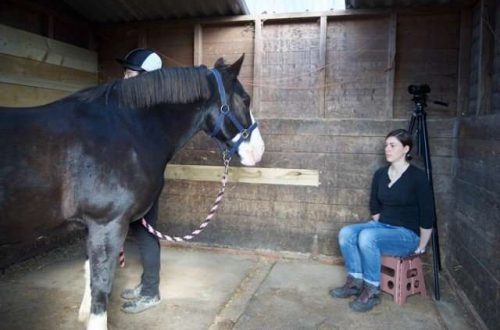
What and how to feed a horse

And how much food should be prepared for the horse? Before giving specific figures, several factors must be taken into account. First, the intensity of work. Light work is considered to be work in the field for four hours, medium – six and heavy – for eight hours. The intensity of work also depends on the traction force and the speed of movement.
Secondly, the physiological state of the horse. More feed will be required for young, weakened, emaciated animals, foals and suckling mares, stallions during the breeding season. The main criterion for the sufficiency of the diet is a change in the live weight of the horse: weight loss is the result of a poor diet, excess weight is the result of overfeeding.
Thirdly, the conditions of detention and the environment. Naturally, when working in the cold season, being in a poorly adapted room, the animal expends additional energy to compensate for large heat losses, to maintain a constant body temperature. The need for additional feed is also increasing. An approximate guideline in compiling a diet for your horse, taking into account your own financial capabilities, can be the recommendations of the specialists of the Institute of Horse Breeding (see table).
| Stern | Easy job | Average work | Hard work | |||
| in winter | in summer | in winter | in summer | in winter | in summer | |
| Hay, kg | 8,0 | — | 10 | 2 | 14 | 5 |
| Straw hay, kg | 4,5 | 3,5 | 2 | — | — | — |
| Concentrate, kg | 2,5 | 2 | 4 | 3 | 5 | 4 |
| Carrot, kg | 2 | — | 5 | — | 6 | — |
| Grass, kg | — | 40 | — | 45 | — | 35 |
| Salt, g | 30 | 30 | 40 | 40 | 45 | 45 |
Since the horse’s stomach is relatively small, one should not give a lot of feed at one time. The horse eats rather slowly, chewing the food thoroughly and swallowing it in small portions. Therefore, it is necessary to allocate at least 30–40 minutes before the start of work for the digestion and assimilation of feed, and the “lunch break” should be at least two hours. Typically, a working horse is fed three times a day. With intensive work, the frequency of feeding can be increased.

Unlike other animals, horses are the most demanding on the quality of feed. Do not give moldy, soil-contaminated, frozen food. Horses digest fiber worse than ruminants, so it is better to prepare hay for them during the budding phase of legumes or the panicle of cereal grasses. Maximum daily supply of cereal hay 25 kg, legume hay 10, straw 10, chaff 5, oats 12, corn or barley 8, peas, beans 2, wheat bran 4, rye bran 3, potatoes 16, beets 12, carrots 10 kg. The only thing a horse can eat indefinitely is legume grass. A hot, sweaty horse can be released to the pasture no earlier than 30-40 minutes after work, until it cools down and rests. Mowed grass must be given fresh. Withered, let alone warmed grass can cause colic.
With three times the feeding of food, the daily ration is distributed as follows. In the evening they give the largest part of the roughage, in the morning – a little less, and at noon (taking into account the short break so that the horse has time to eat and partially digest the food) – even less. Concentrated feed in the morning and at noon is given in equal amounts, and at night – a little more.
An excellent dietary food can be specially prepared porridge. Here is her approximate recipe for 10 horses: 10 kg of oats (preferably flattened), 500 g of flaxseed, 75 g of salt are placed in a tight box (tub, trough) and poured with boiling water until the feed is saturated with water. Pour on top, without stirring, an even layer of 5 kg of wheat bran. The box is covered to keep warm and left for two to three hours. Before distribution, the bran is mixed with the rest of the mass. Horses eat this porridge very willingly, it is easily digested and acts in a slightly laxative way. It is best to give it in the evening cleaning.
The most correct order of feeding will be as follows: first give hay, then succulent feed (carrots, beets) and finally concentrates. If you give concentrates first, then a hungry horse greedily eats food and chews it poorly. Eaten later roughage will displace underdigested grain from the stomach into the intestines, which can increase the fermentation of feed, cause bloating and colic.
Changes in the diet are carried out gradually. With a sharp change, the horse’s body is not able to quickly adapt to a new feed (especially grass and other laxative feeds), resulting in indigestion. The normal time for a complete transfer from one diet to another is about ten days. When replacing some concentrates with others, new ones are fed in a gradually increasing amount, mixing them with old ones. Further, reducing the share of the old food, they completely switch to the new one.
Water the horses should be plenty. The horse’s high need for water is due to its large losses with sweat and respiration, which, even for a horse at rest, are about one liter per hour. During hard work, a horse drinks up to 50-60 liters of water per day. Water consumption depends on the season, air temperature and humidity, water content in feed, load intensity, individual characteristics of the animal and water properties.

Systematic underdrinking can lead to dehydration and the accumulation of toxic metabolic products. Underdone horses lose their appetite and refuse dry food. With a lack of water in the body, the secretion of the digestive glands is difficult or completely stops, normal digestion is disturbed, and colic may occur. If there is an automatic drinker in the stall, then the horse drinks more often and in smaller portions. And when drinking from a bucket, she drinks, as it were, “in reserve”. You can leave a bucket of water in the stall. Often a horse, having started eating hay and oats, breaks away from the feed and drinks water. The animal should be watered at least 4-6 times a day, and in hot weather – up to 6-7 times. It should be especially emphasized that it is impossible to give water to a sweaty horse after work. You can give her a few sips of water and continue to work for at least an hour. Drinking cold water immediately after work can cause colds and rheumatic hoof inflammation (opoy). Without compromising health, a horse can drink water approximately 1-2 hours after work. Sometimes it is advised to crush hay into a bucket of water. Strained through hay, the water has time to partially heat up in the oral cavity. Warm water (over 18 C) does not refresh well, and horses drink it reluctantly. In winter, cold water can be warmed by adding hot water to it.
Of course, now we, and with us our animals, are going through hard times. There, however, if you have already got a horse and it works for you, then some kind of “living wage” must be provided to it, no matter what. So that it doesn’t work out, as in the old joke, where a man taught a couple of horses to eat nothing at all. They were almost used to it, but the trouble is – they suddenly fell. No wonder the people say: “Either spare the food, or the horse.”
- Prelest 1th of October 2012
Thank you for very important information. Can I have a question?)) It says here about beets, .. what kind of beets, sugar, or ordinary red beets? and how much corn can be given to a non-working young horse and in what form? Thanks in advance Reply
- Ksusha17 7th of December 2012
What vitamins should a horse receive in winter? Answer





